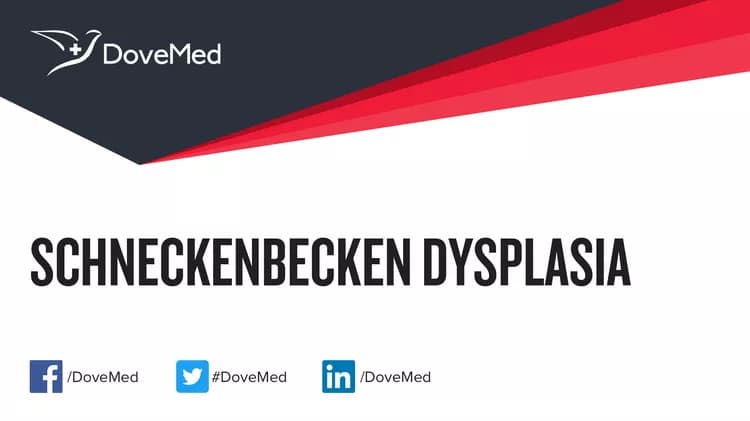What are the other Names for this Condition? (Also known as/Synonyms)
- Chondrodysplasia lethal neonatal with snail like pelvis
What is Schneckenbecken Dysplasia? (Definition/Background Information)
- Schneckenbecken Dysplasia (or chondrodysplasia with snail-like pelvis) is a prenatally lethal spondylodysplastic dysplasia
- The typical radiographic finding is the snail-like configuration of the hypoplastic iliac bone
- Additional features include flattened hypoplastic vertebral bodies, short ribs, short and wide fibulae, short and broad long bones with a dumbbell-like appearance, and precocious ossification of the tarsus
(Source: Schneckenbecken Dysplasia; Orphanet, National Institute of Health and Medical Research (INSERM), Paris.)
Who gets Schneckenbecken Dysplasia? (Age and Sex Distribution)
- Schneckenbecken Dysplasia is a rare, congenital disorder. The presentation of symptoms occur in the fetal stages
- Both males and females may be affected
- Worldwide, individuals of all racial and ethnic groups may be affected
- Less than 20 cases have been reported in the literature so far
What are the Risk Factors for Schneckenbecken Dysplasia? (Predisposing Factors)
- A positive family history of Schneckenbecken Dysplasia may be an important risk factor, since this disorder is inherited
- Currently, no other risk factors have been clearly identified for Schneckenbecken Dysplasia
It is important to note that having a risk factor does not mean that one will get the condition. A risk factor increases one’s chances of getting a condition compared to an individual without the risk factors. Some risk factors are more important than others.
Also, not having a risk factor does not mean that an individual will not get the condition. It is always important to discuss the effect of risk factors with your healthcare provider.
What are the Causes of Schneckenbecken Dysplasia? (Etiology)
- Schneckenbecken Dysplasia is caused by loss-of-function mutations of the SLC35D1 gene (1p32-p31)
- Schneckenbecken Dysplasia is inherited in an autosomal recessive manner
(Source: Schneckenbecken Dysplasia; Orphanet, National Institute of Health and Medical Research (INSERM), Paris.)
Autosomal recessive: Autosomal recessive conditions are traits or disorders that occur when two copies of an abnormal gene have been inherited on a non-sex chromosome. If both parents have an autosomal recessive condition, there is a 100% likelihood of passing on the mutated genes to their children. If, however, only one mutant copy of the gene is inherited, the individual will be a carrier of the condition, but will not be present with any symptoms. Children born to two carriers, have a 25% chance of being homozygous dominant (unaffected), a 50% chance of being heterozygous (carrier), and a 25% chance of being homozygous recessive (affected).
What are the Signs and Symptoms of Schneckenbecken Dysplasia?
The signs and symptoms of Schneckenbecken Dysplasia may include the following:
Very frequently present symptoms in 80-99% of the cases:
- Disproportionate short-limb short stature
- Fibular hypoplasia
- Hypoplastic ilia
- Hypoplastic scapulae
- Hypoplastic vertebral bodies
- Increased fibular diameter
- Lateral clavicle hook
- Lymphedema
- Macrocephaly
- Malar flattening
- Micromelia
- Narrow chest
- Polyhydramnios
- Short neck
- Short ribs
Frequently present symptoms in 30-79% of the cases:
- Abnormality of the fingernails
- Cryptorchidism
- Dolichocephaly
- Hypoplastic toenails
Occasionally present symptoms in 5-29% of the cases:
In addition to the above, the following signs and symptoms may be present:
- Anterior rib cupping
- Advanced ossification of carpal bones
- Brachydactyly
- Flat acetabular roof
- Midface retrusion
- Ovoid vertebral bodies
- Metaphyseal irregularity
(Source: Schneckenbecken Dysplasia; Genetic and Rare Diseases Information Center (GARD) of National Center for Advancing Translational Sciences (NCATS), USA.)
How is Schneckenbecken Dysplasia Diagnosed?
Schneckenbecken Dysplasia is diagnosed on the basis of the following information:
- Radiological examination of fetus (The typical radiographic finding is the snail-like configuration of the hypoplastic iliac bone)
- Thorough medical history evaluation
- Laboratory tests
- Biopsy studies, if necessary
Many clinical conditions may have similar signs and symptoms. Your healthcare provider may perform additional tests to rule out other clinical conditions to arrive at a definitive diagnosis.
What are the possible Complications of Schneckenbecken Dysplasia?
The complications of Schneckenbecken Dysplasia may include:
- Fetal demise
Complications may occur with or without treatment, and in some cases, due to treatment also.
How is Schneckenbecken Dysplasia Treated?
There is no cure for Schneckenbecken Dysplasia, since it is a genetic condition.
How can Schneckenbecken Dysplasia be Prevented?
- Schneckenbecken Dysplasia may not be preventable, since it is a genetic disorder
- Genetic testing of the expecting parents (and related family members) and prenatal diagnosis (molecular testing of the fetus during pregnancy) may help in understanding the risks better during pregnancy
- If there is a family history of the condition, then genetic counseling will help assess risks, before planning for a child
- Active research is currently being performed to explore the possibilities for treatment and prevention of inherited and acquired genetic disorders
What is the Prognosis of Schneckenbecken Dysplasia? (Outcomes/Resolutions)
- The prognosis of Schneckenbecken Dysplasia is poor, since the condition leads to fetal demise in majority of cases
Additional and Relevant Useful Information for Schneckenbecken Dysplasia:
The following DoveMed website link is a useful resource for additional information:
Related Articles
Test Your Knowledge
Asked by users
Related Centers
Related Specialties
Related Physicians
Related Procedures
Related Resources
Join DoveHubs
and connect with fellow professionals


0 Comments
Please log in to post a comment.